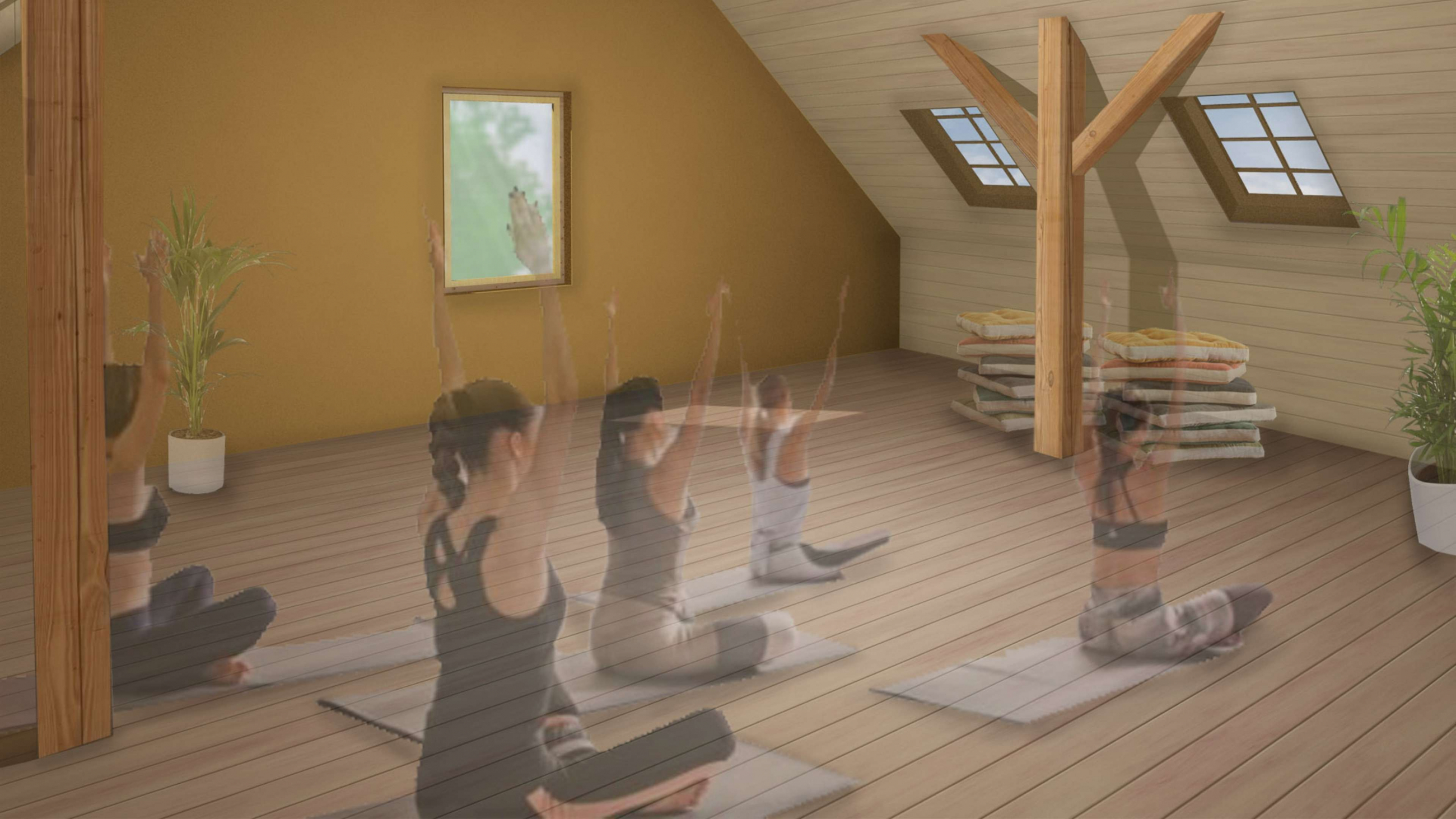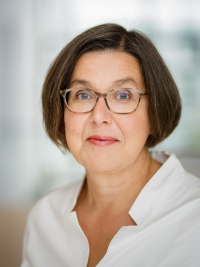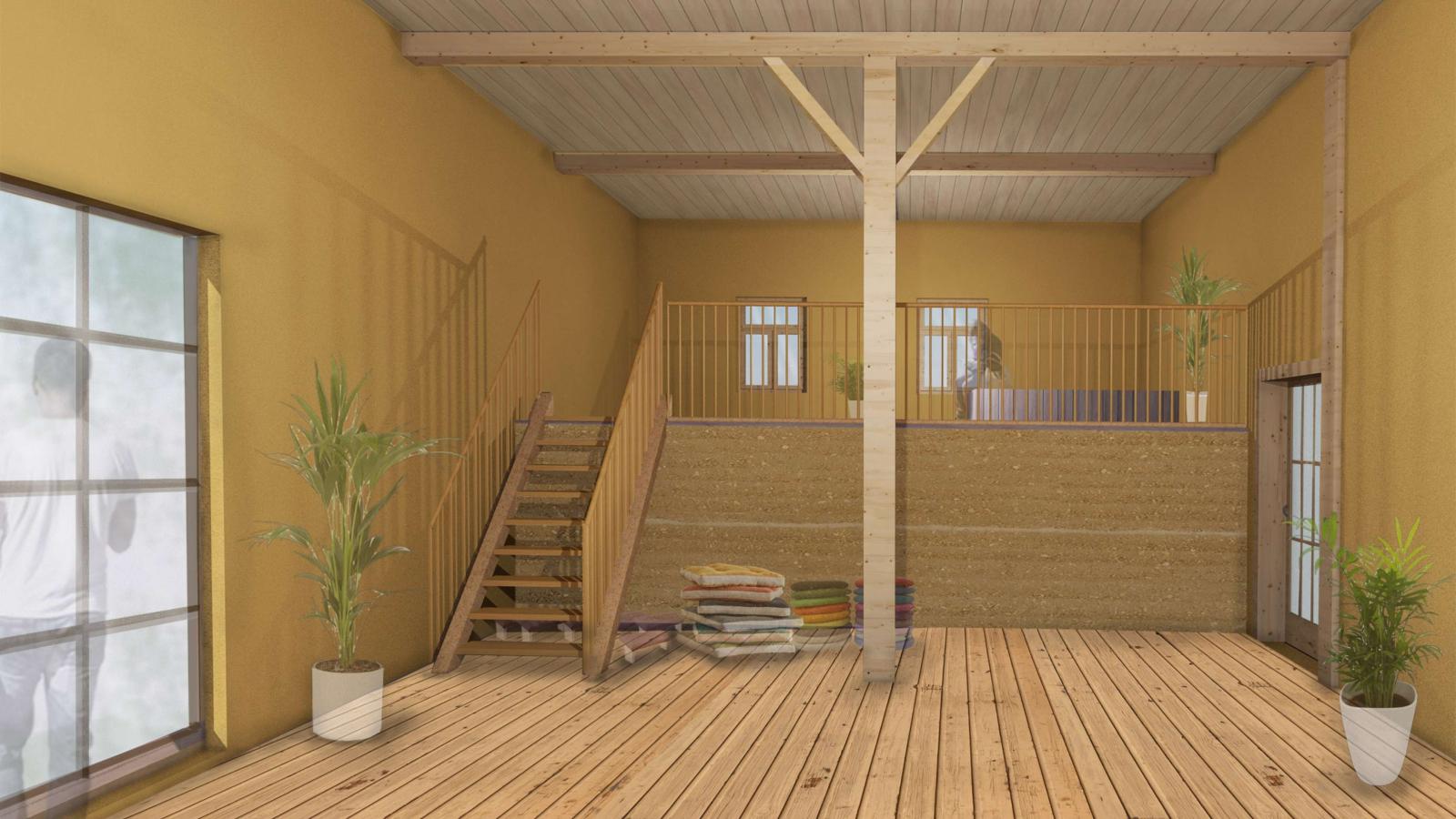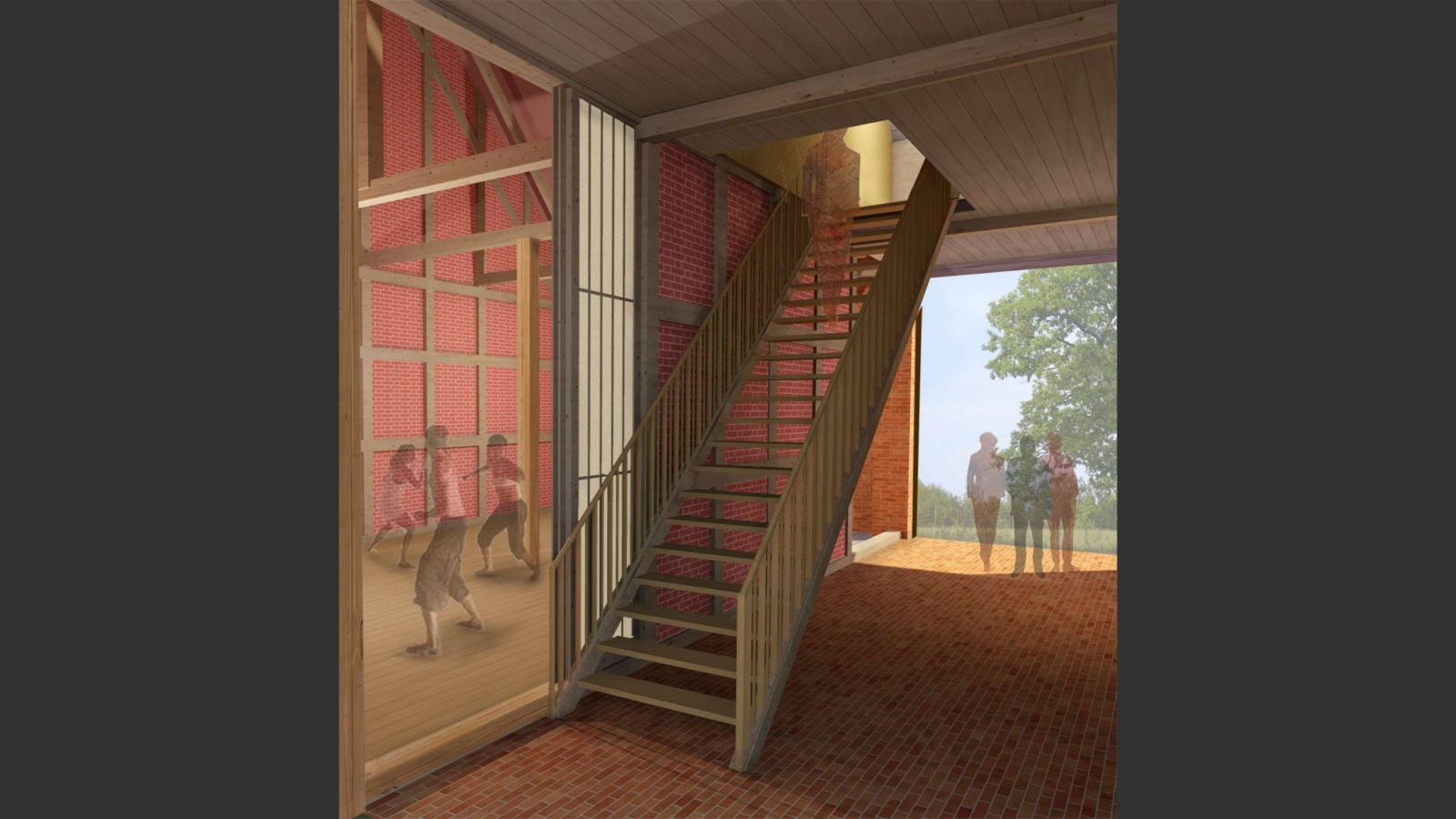Suono – Meeting Space in the Oderbruch Region
Building survey and conversion of the "Wolffs Mühle" drive-through barn in Oderberg

Location and Generals
This master's thesis focuses on the barn of the mill property "Wolffs Mühle", named after the last miller.
It is a drive-through barn that was built as a half-timbered barn, but was rebuilt in large parts as a solid structure after a fire. Only the courtyard façade has been preserved as a half-timbered wall with brick infill.
The work consists of a building survey and a conversion design based on the building survey. It is important to me to consider the barn in the context of the entire estate, in whose spirit each of the buildings belonging to the farmstead is woven. The property is located on the outskirts of Oderberg, which lies in north-eastern Brandenburg.
Today the property is privately owned and listed. It is unused and the buildings are badly dilapidated.
"Suono – Encounter Space in the Oderbruch".
One can see Wolffs Mühle as a place where a miller once lived and pursued his craft. Then you see a place where horse-drawn carts drove in and out, unloading their grain, which was then threshed in the barn. The straw was chopped, the grain transported to the mill and later collected again in sacks.
Now, however, Wolff's mill can also be seen as a place where many people met. The farmers of the surrounding area brought their grain and it was probably not only a lively sharing of work, but also a place of exchange about life, a place of encounter from person to person.
We live in a time when the farm buildings of historic farms in particular have been robbed of their purpose and so they are falling apart. It has become necessary to integrate other, new uses into these buildings and still try not to destroy the stories and the way they have grown. Thus, a central theme of the conversion is "encounter". Be it the encounter with the historical buildings, different people or the encounter with oneself in silence and stillness.
A space for contemplation, for celebrations, for mourning or for seminars should invite different people to stay, to arrive, to take a short or longer breath or to learn. The title "Suono" comes from the Italian and means both "sound" and "I sound" and is intended to express this kind of encounter and discovery.
The conversion design
A major focus of the measures is to work as much as possible with the purity of the natural and historical materials that were also used 100 years ago. Materials that have grown and evolved there, where they can then also contribute and develop in familiar surroundings.
These are basically four building materials: natural stone, clay and sand, fired bricks and wood.
The entire redesign is to be kept simple so that there is space to "fill up" that is not already full of ornamentation. The original units of use (threshing floor, barn, threshing room), which are characteristic of this barn building, are also to be preserved. The threshing floor will be used for access and recreation. The barns are to be turned into lounges where events can be held. Above one of the barns and the threshing floor there will be an upper floor, the second barn will remain open up to the roof space, as is the case now. The former threshing floor will be converted into a kitchenette.
Since only parts of the barn will be insulated and thus heatable, other areas will be used in summer. The sanitary facilities are located outside the barn with access from the courtyard and the rear areas. In perspective, this can also be used from the outside if events are not limited to the barn space. In order to get more light into the barn, the gate on the courtyard side is to be glazed. The uninsulated area intended for summer use is to be designed as a semi-open space with movable elements, so that an opening into the threshing floor and outside space is possible. The floors are to consist partly of wooden floorboards and partly of bricks, two historical floor coverings. The walls are to be finished in different ways. Interior insulation of various kinds makes it possible to deal with existing walls. There are walls that are to be covered with soft wood fibre boards and clay plaster, others are to be insulated with mineral foam insulation boards and still others with darning hemp.
Since the barn is severely deformed in various places, a static renovation must be carried out, parts of the historic natural stone foundations must be strengthened and reinforced in order to be able to absorb the additional loads from the conversion and the associated insulation measures. Ideas for the structural interventions were introduced in this work, but they would have to be calculated and checked by a structural engineer.
Project participants
Project management

Prof. Dipl.-Ing. Silke Straub-Beutin
Project management
Prof. Dr.-Ing. Christof Ziegert
Honorary professor at the Potsdam University of Applied Sciences
Students
Karoline Marie Fechner
Graduate of the Master's programme Building Conservation and Construction Work on Existing Buildings

